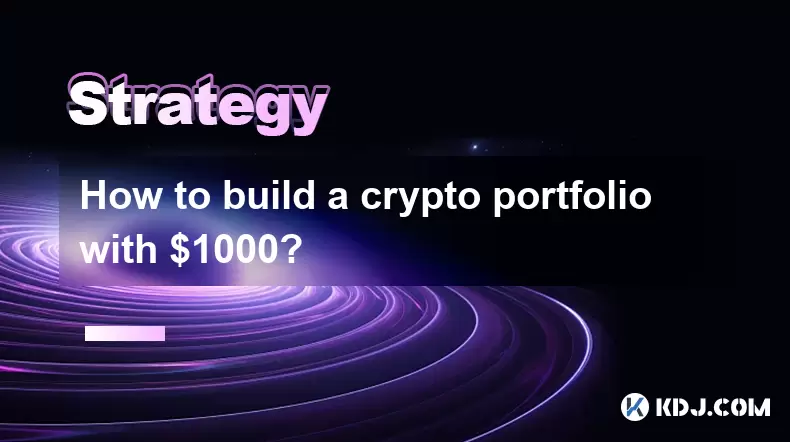-
 Bitcoin
Bitcoin $115200
0.74% -
 Ethereum
Ethereum $3730
6.71% -
 XRP
XRP $3.075
4.85% -
 Tether USDt
Tether USDt $1.000
0.01% -
 BNB
BNB $766.1
1.85% -
 Solana
Solana $168.7
4.22% -
 USDC
USDC $0.9999
0.00% -
 Dogecoin
Dogecoin $0.2097
5.42% -
 TRON
TRON $0.3327
1.72% -
 Cardano
Cardano $0.7547
4.04% -
 Stellar
Stellar $0.4156
4.83% -
 Hyperliquid
Hyperliquid $38.77
1.37% -
 Sui
Sui $3.589
4.15% -
 Chainlink
Chainlink $17.09
4.86% -
 Bitcoin Cash
Bitcoin Cash $574.6
5.82% -
 Hedera
Hedera $0.2523
1.95% -
 Avalanche
Avalanche $23.01
7.68% -
 Ethena USDe
Ethena USDe $1.001
-0.02% -
 Litecoin
Litecoin $120.4
9.83% -
 Toncoin
Toncoin $3.426
-4.06% -
 UNUS SED LEO
UNUS SED LEO $8.918
-0.53% -
 Shiba Inu
Shiba Inu $0.00001250
2.49% -
 Uniswap
Uniswap $9.956
8.52% -
 Polkadot
Polkadot $3.724
3.26% -
 Monero
Monero $304.7
0.19% -
 Dai
Dai $0.9999
-0.01% -
 Bitget Token
Bitget Token $4.394
1.48% -
 Cronos
Cronos $0.1400
6.96% -
 Pepe
Pepe $0.00001076
2.83% -
 Aave
Aave $268.4
3.45%
What Is a Decentralized Finance (DeFi)?
Decentralized finance (DeFi) has emerged as a groundbreaking sector, empowering individuals to control their finances through peer-to-peer (P2P) applications and services built on blockchain technology.
Nov 06, 2024 at 01:41 am

What Is Decentralized Finance (DeFi)?
Understanding DeFi
- Definition: Decentralized finance (DeFi) is a rapidly growing sector of the financial industry that leverages blockchain technology to create peer-to-peer (P2P) financial applications and services.
Key Features: DeFi platforms are characterized by:
- Decentralization: Removing the need for intermediaries, such as banks and exchanges.
- Transparency: All transactions are recorded on the public blockchain, providing visibility into activities.
- Accessibility: Open to anyone with an internet connection, regardless of location or financial status.
- Programmability: Smart contracts automate financial processes, making them more efficient and secure.
Core Principles: DeFi aims to break down traditional financial barriers and empower individuals to control their own finances through:
- Reduction of Costs: Eliminating middlemen and transaction fees.
- Increased Accessibility: Providing financial services to the unbanked and underserved.
- Enhancement of Transparency: Ensuring accountability and reducing the risk of fraud.
Benefits and Risks of DeFi
Benefits:
- Accessibility: Open 24/7, accessible to users from anywhere with an internet connection.
- Low Fees: Significantly lower transaction and transfer fees compared to traditional financial institutions.
- Yield Farming: Allows users to earn passive income by providing liquidity to protocols.
- Decentralization: Removes single points of failure and reduces the risk of censorship.
Risks:
- Volatility: DeFi markets can be highly volatile, resulting in significant price fluctuations.
- Security: DeFi protocols can be vulnerable to hacks and exploits, potentially leading to loss of funds.
- Complexity: DeFi platforms can be complex to use, requiring a deep understanding of blockchain technology.
- Legal Uncertainty: The regulatory landscape surrounding DeFi is still evolving, leading to potential legal risks.
Applications of DeFi
DeFi applications include:
- Decentralized Exchanges (DEXs): Allow for the trading of cryptocurrencies without the need for a central authority.
- Stablecoins: Cryptocurrencies pegged to a fiat currency, providing price stability for DeFi transactions.
- Lending and Borrowing: Protocols that connect borrowers and lenders, providing access to loans and interest-earning opportunities.
- Derivatives: Contracts that allow users to speculate on the price of underlying assets or hedge against risk.
Disclaimer:info@kdj.com
The information provided is not trading advice. kdj.com does not assume any responsibility for any investments made based on the information provided in this article. Cryptocurrencies are highly volatile and it is highly recommended that you invest with caution after thorough research!
If you believe that the content used on this website infringes your copyright, please contact us immediately (info@kdj.com) and we will delete it promptly.
- Cryptocurrency, Altcoins, and Profit Potential: Navigating the Wild West
- 2025-08-04 14:50:11
- Blue Gold & Crypto: Investing Disruption in Precious Metals
- 2025-08-04 14:30:11
- Japan, Metaplanet, and Bitcoin Acquisition: A New Era of Corporate Treasury?
- 2025-08-04 14:30:11
- Coinbase's Buy Rating & Bitcoin's Bold Future: A Canaccord Genuity Perspective
- 2025-08-04 14:50:11
- Coinbase's Buy Rating Maintained by Rosenblatt Securities: A Deep Dive
- 2025-08-04 14:55:11
- Cryptos, Strategic Choices, High Returns: Navigating the Meme Coin Mania
- 2025-08-04 14:55:11
Related knowledge

How to avoid common crypto investment mistakes?
Jul 13,2025 at 01:35am
Understanding the Risks of Crypto InvestmentInvesting in cryptocurrency can be highly rewarding, but it also comes with significant risks. One of the ...

What is a long-short crypto strategy?
Jul 15,2025 at 10:56am
Understanding the Basics of a Long-Short Crypto StrategyA long-short crypto strategy is an investment approach where traders simultaneously take long ...

What is a long-short crypto strategy?
Jul 11,2025 at 01:28pm
Understanding the Basics of Long-Short Crypto StrategyA long-short crypto strategy is an investment approach where traders take both long and short po...

How to use the RSI indicator for crypto?
Jul 12,2025 at 03:56pm
Understanding the RSI Indicator in Cryptocurrency TradingThe Relative Strength Index (RSI) is a momentum oscillator used to measure the speed and chan...

Is copy trading a good strategy for crypto beginners?
Jul 12,2025 at 08:28am
Understanding Copy Trading in the Cryptocurrency MarketCopy trading is a strategy where novice traders replicate the trades of experienced investors a...

How to build a crypto portfolio with $1000?
Jul 13,2025 at 08:14pm
Understanding the Basics of Cryptocurrency InvestmentBuilding a crypto portfolio with $1000 starts with understanding the fundamentals of cryptocurren...

How to avoid common crypto investment mistakes?
Jul 13,2025 at 01:35am
Understanding the Risks of Crypto InvestmentInvesting in cryptocurrency can be highly rewarding, but it also comes with significant risks. One of the ...

What is a long-short crypto strategy?
Jul 15,2025 at 10:56am
Understanding the Basics of a Long-Short Crypto StrategyA long-short crypto strategy is an investment approach where traders simultaneously take long ...

What is a long-short crypto strategy?
Jul 11,2025 at 01:28pm
Understanding the Basics of Long-Short Crypto StrategyA long-short crypto strategy is an investment approach where traders take both long and short po...

How to use the RSI indicator for crypto?
Jul 12,2025 at 03:56pm
Understanding the RSI Indicator in Cryptocurrency TradingThe Relative Strength Index (RSI) is a momentum oscillator used to measure the speed and chan...

Is copy trading a good strategy for crypto beginners?
Jul 12,2025 at 08:28am
Understanding Copy Trading in the Cryptocurrency MarketCopy trading is a strategy where novice traders replicate the trades of experienced investors a...

How to build a crypto portfolio with $1000?
Jul 13,2025 at 08:14pm
Understanding the Basics of Cryptocurrency InvestmentBuilding a crypto portfolio with $1000 starts with understanding the fundamentals of cryptocurren...
See all articles

























































































